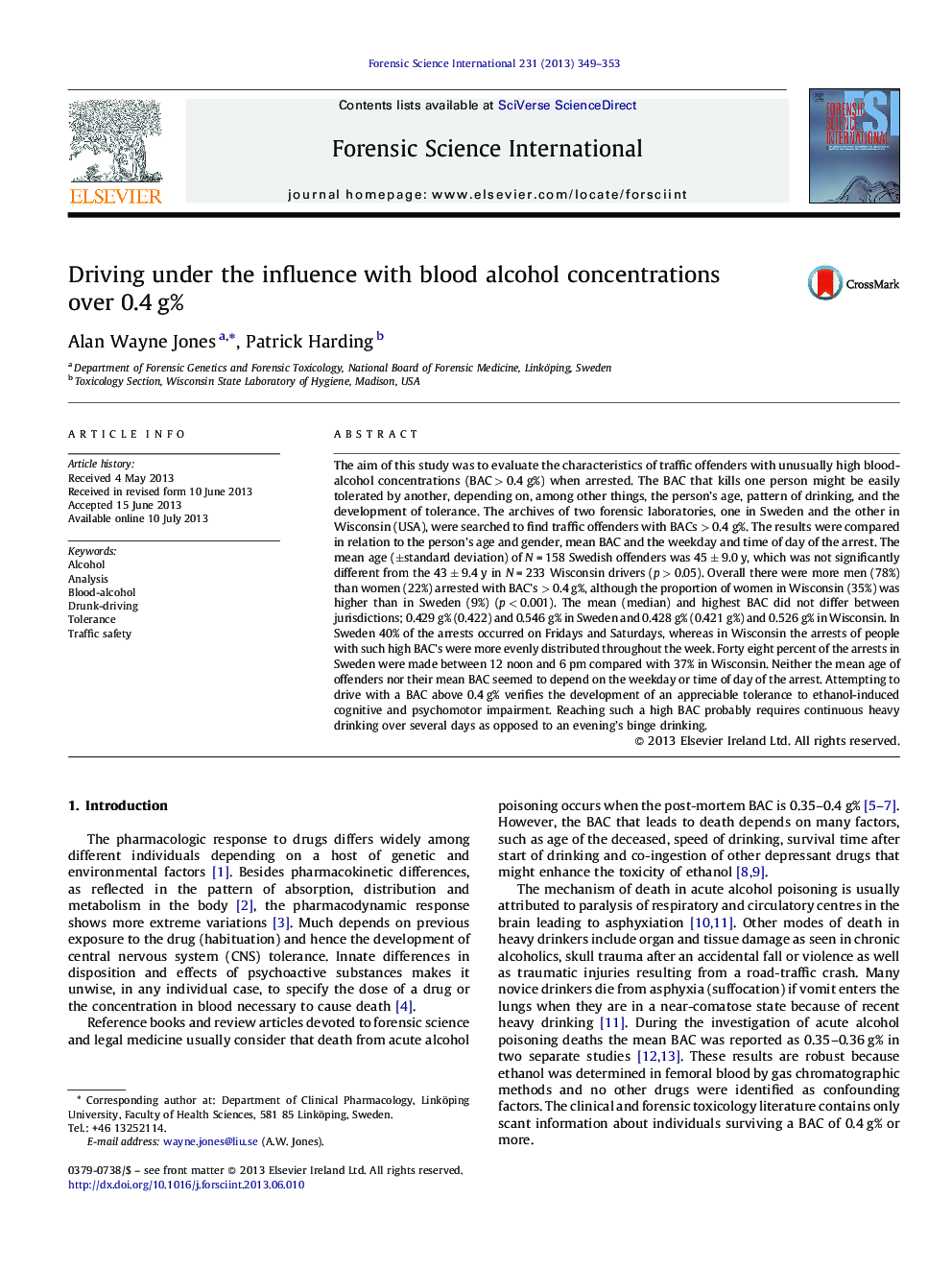| Article ID | Journal | Published Year | Pages | File Type |
|---|---|---|---|---|
| 95856 | Forensic Science International | 2013 | 5 Pages |
The aim of this study was to evaluate the characteristics of traffic offenders with unusually high blood-alcohol concentrations (BAC > 0.4 g%) when arrested. The BAC that kills one person might be easily tolerated by another, depending on, among other things, the person's age, pattern of drinking, and the development of tolerance. The archives of two forensic laboratories, one in Sweden and the other in Wisconsin (USA), were searched to find traffic offenders with BACs > 0.4 g%. The results were compared in relation to the person's age and gender, mean BAC and the weekday and time of day of the arrest. The mean age (±standard deviation) of N = 158 Swedish offenders was 45 ± 9.0 y, which was not significantly different from the 43 ± 9.4 y in N = 233 Wisconsin drivers (p > 0.05). Overall there were more men (78%) than women (22%) arrested with BAC's > 0.4 g%, although the proportion of women in Wisconsin (35%) was higher than in Sweden (9%) (p < 0.001). The mean (median) and highest BAC did not differ between jurisdictions; 0.429 g% (0.422) and 0.546 g% in Sweden and 0.428 g% (0.421 g%) and 0.526 g% in Wisconsin. In Sweden 40% of the arrests occurred on Fridays and Saturdays, whereas in Wisconsin the arrests of people with such high BAC's were more evenly distributed throughout the week. Forty eight percent of the arrests in Sweden were made between 12 noon and 6 pm compared with 37% in Wisconsin. Neither the mean age of offenders nor their mean BAC seemed to depend on the weekday or time of day of the arrest. Attempting to drive with a BAC above 0.4 g% verifies the development of an appreciable tolerance to ethanol-induced cognitive and psychomotor impairment. Reaching such a high BAC probably requires continuous heavy drinking over several days as opposed to an evening's binge drinking.
